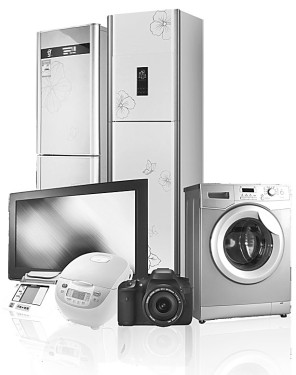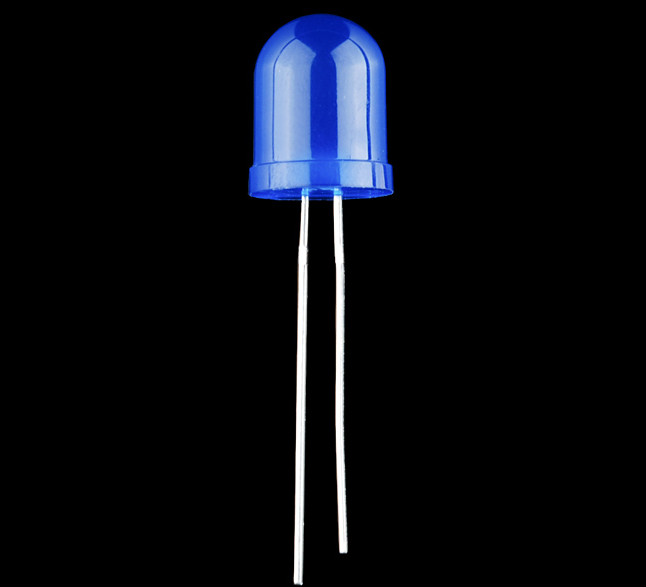 In the eyes of many consumers, plastic is always inferior to stainless steel, glass, and other materials, and it is believed that the toxic substances contained in plastics are likely to precipitate and affect health. In fact, this view is not correct. With the development of science and technology, plastics are now widely used in electrical products, but also have excellent performances such as health, environmental protection, and low cost. Experts said in an interview with reporters that plastics have become an indispensable material in the manufacture of home appliances. With the development of plastics itself, the proportion of household appliances in the manufacture of home appliances will also continue to increase, and consumers will undoubtedly lower their purchases. Cost, improve the use of good things.
In the eyes of many consumers, plastic is always inferior to stainless steel, glass, and other materials, and it is believed that the toxic substances contained in plastics are likely to precipitate and affect health. In fact, this view is not correct. With the development of science and technology, plastics are now widely used in electrical products, but also have excellent performances such as health, environmental protection, and low cost. Experts said in an interview with reporters that plastics have become an indispensable material in the manufacture of home appliances. With the development of plastics itself, the proportion of household appliances in the manufacture of home appliances will also continue to increase, and consumers will undoubtedly lower their purchases. Cost, improve the use of good things. The proportion of applications continues to increase Many consumers are always wary of plastics and feel that plastics do not perform as well as steel. In fact, this is a misunderstanding, and now the plastic performance has greatly exceeded our imagination.
According to reports, plastics have made great breakthroughs in performance and have become affordable raw materials for home appliances. Such as plastic colorful, very suitable for the manufacture of electrical enclosures, its hardness, bending strength, impact strength and tensile strength have also been greatly improved, but also has a good heat resistance, most home appliances must work Heating, plastics used in home appliances have long been able to withstand higher temperatures. Plastic flame retardant, good insulation properties, in addition to the traditional nylon 6 and nylon 66, high temperature nylon PAPT widely used in electrical and electronic industries, such as small connectors, mobile phone housing with high welding strength connectors and board and board Connectors etc. In addition, plastics also have the advantage of good processing performance and affordable prices.
Plastics, especially engineering plastics, are the largest areas of application in information products such as optical discs for electronic and electrical products, accounting for more than 25% of total usage. According to statistics from the China Household Electrical Appliances Association, the current consumption of plastics in home appliances has accounted for 40% of the weight ratio. The average usage of household appliances such as TVs and air conditioners is 1.5-2.5 kg per unit.
It is also understood that in the home appliance industry, product plasticization has become one of the important development directions of the home appliance industry. Plastics have become the fastest growing material in the field of home appliance applications. In recent years, the average annual growth rate has reached about 29.5%.
According to industry insiders, the improvement of plastics through various processes has become the core component of most electrical and electronic products. Various high-end engineering plastics and compounds have achieved higher requirements for insulation performance, heat resistance, and fire performance. The development of plastic raw material technology has created new opportunities for many manufacturing industries. It plays a pivotal role in the electrical and electronic products industry around the world, and also promotes the overall development of the electronic and electrical industry to a new level.
The gradual improvement of plastic properties With the development of science and technology, the performance of plastics has been continuously improved and improved.
According to reports, there are many different categories and levels of plastics, from polycarbonate (PC) and acrylonitrile-butadiene-styrene (ABS) to polypropylene (PP), which are mixed in different proportions. Can be processed into a variety of raw materials, performance can meet the different needs of electronic and electrical products. Data analysis shows that China's per capita steel and plastic consumption is 600 kg and 50 kg, respectively, and plastic substitute steel is becoming a new direction for the development of new materials, and there is a lot of room for development.
Director of the US Group Purchasing Center Qin Shuyang said that with the increasingly diversified and artistic appearance of home appliances, higher requirements have been placed on special-effect plastics. Under the circumstance of guaranteeing the performance of the products, replacing the metal materials with high-performance engineering plastics has become an irresistible trend through the adoption of new materials, new designs, and new processes. The company has begun to use metal-free, pearl-colored, gradient color spray-free plastics instead of high-cost, high-pollution spraying processes.
It is understood that in addition to plastics can meet the new needs of home appliance design, but also to meet the technical requirements of home appliances on technology updates. For example, how can a polyurethane insulation layer of a refrigerator be more heat-retaining and environmental-friendly, and how the extension and tensile properties of the liner material can better realize complex structures.
In addition, as people pay more and more attention to health, they propose higher and more standardized requirements for antibacterial and bactericidal plastics for home appliances. It is learned that more and more companies have used antibacterial plastics in refrigerators, washing machines, and drinking fountains. , rice cookers, air refreshers, etc. to reduce microbial contamination and cross-infection of pathogens. According to the latest research report published by the US consulting firm Frost & Sullivan, the global antibacterial plastics market will continue to grow in size as people's requirements for product safety and hygiene increase; by 2015, up to 20% of global plastic products will be manufactured. Will have antibacterial function.
New plastics continue to emerge. Plastics are closely related to the home appliance manufacturing industry. With the upgrading of home appliances, new plastics are also emerging.
It is understood that corn starch can now be used as raw materials for plastics. Tang Xin, head of a recycled plastics production company, said that these plastics are made from edible cornstarch. They are absolutely environmentally friendly and pollution-free. The most attractive are these. Raw materials are degradable. Tang Xin said that the products made from these raw materials will be dissolved as soon as they are phased out. It is very environmentally friendly.
It is understood that the use of antibacterial materials cannot be used for the ionization of antibacterial homes. The core technology for the development of antibacterial plastics is the addition of antibacterial agents to plastics. In the past, antibacterial agents would cause microorganisms to develop drug resistance, had poor chemical stability, and were prone to migration in plastics, leading to shortened antimicrobial life. In recent years, inorganic antibacterial agents have inhibited the growth and reproduction of bacteria by the antimicrobial bactericidal action of metal ions (Ag+, Cu2+, and Zn2+). They have not developed resistance and have outstanding heat resistance (>600°C), but silver The high cost also constrains its wider range of applications.
According to experts, nowadays there is a substance called masterbatch in plastic dyeing. Its biggest advantage is that it is pollution-free and environmentally friendly. The so-called masterbatch coloring is a high proportion of pigments and additives and plastic resins, and the pigments are well dispersed on the carrier by special extrusion equipment. The coloring of traditional pigments is not uniform and contains heavy metal components that are harmful to the human body. The color masterbatch is colored and does not contain heavy metals such as cadmium and lead, and is completely harmless to the human body after being colored. At present, color masterbatch has begun to be widely used in various daily necessities and home appliances.
We are 10mm Blue Through-Hole LED(DIP LED)
For the raw materials, we use the LED chip from Taiwan Epistar, Tyntek, Optotech. The stability of our products have been recognized by all of our custom.
We supply kinds of 10mm Through-hole LED with different wavelength from 365nm to 1550nm, which include the visible LED and the invisible LED.
In this catalog, we mainly introduce the 10mm Blue Through-Hole LED.

For the bringhtness of 10mm blue through-hole LED, we have three level: common bright 10mm blue through-hole LED, super bright 10mm blue through-hole LED and ultra bright 10mm blue through-hole LED.
For the angle of 10mm blue through-hole LED, 15 degrees, 30 degrees, 45 degrees, 60 degrees, 120 degrees are available.
10mm Through-hole LED, we supply 10mm blue LED with water clear lens, 10mm blue LED with diffused lens, 10mm blue LED with blue clear lens and 10mm blue LED with blue diffused lens. In addition, the shape can be 10mm round LED without flange(fringe), 10mm short head LED, 10mm bullet top blue LED, 10mm round blue LED with flange ect.
10mm blue Through-hole LED widely used for blue sign, display LED, indicator LED, die hole LED and 10mm round blue with lamp holder because of the high brightness and the small size.
10mm Blue Through-Hole LED
10mm Blue Through-Hole LED, Super Bright 10mm Through-Hole LED, Oval Through-hole 10mm LED, Square Blue Through-Hole LED
Shenzhen Best LED Opto-electronic Co.,Ltd , https://www.bestsmd.com